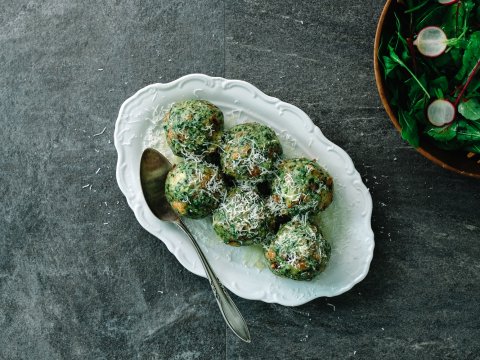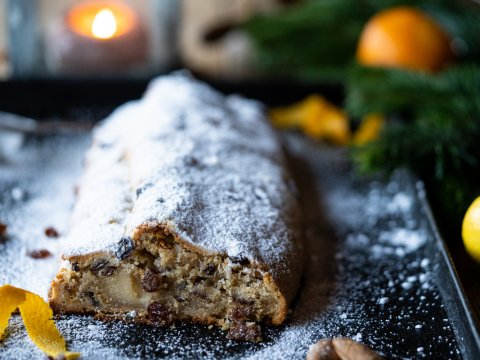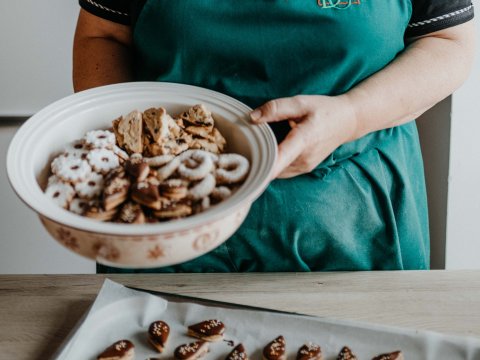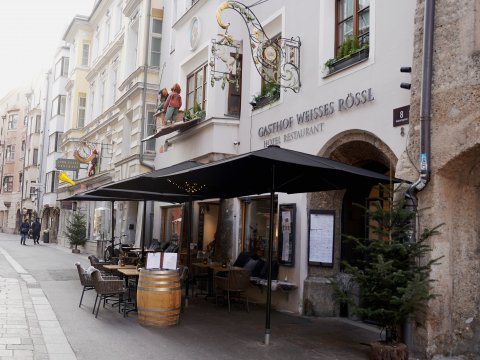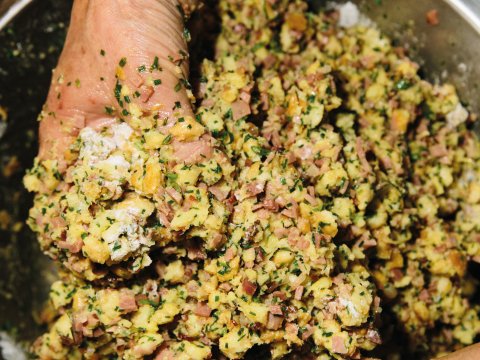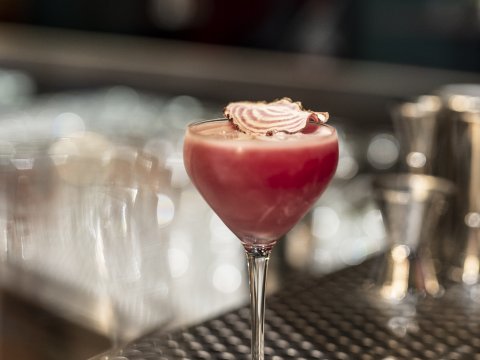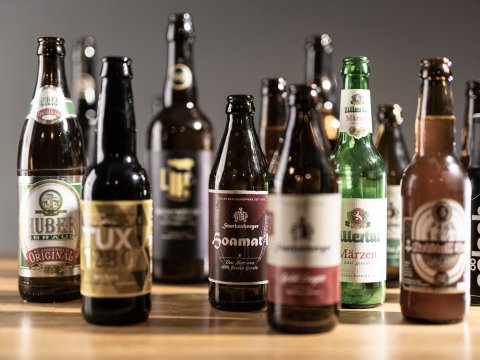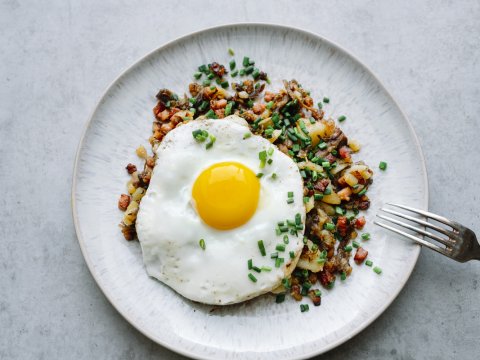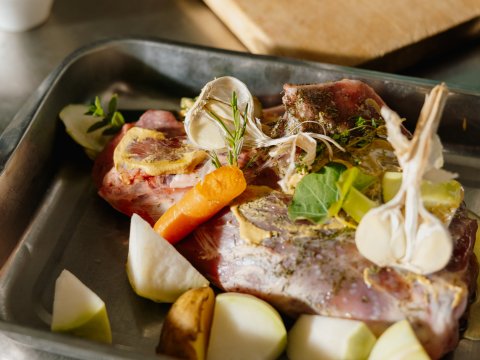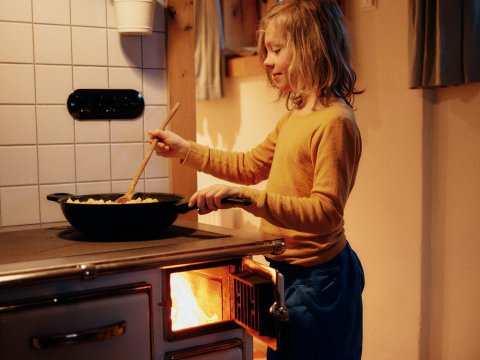Secrets of a Butcher
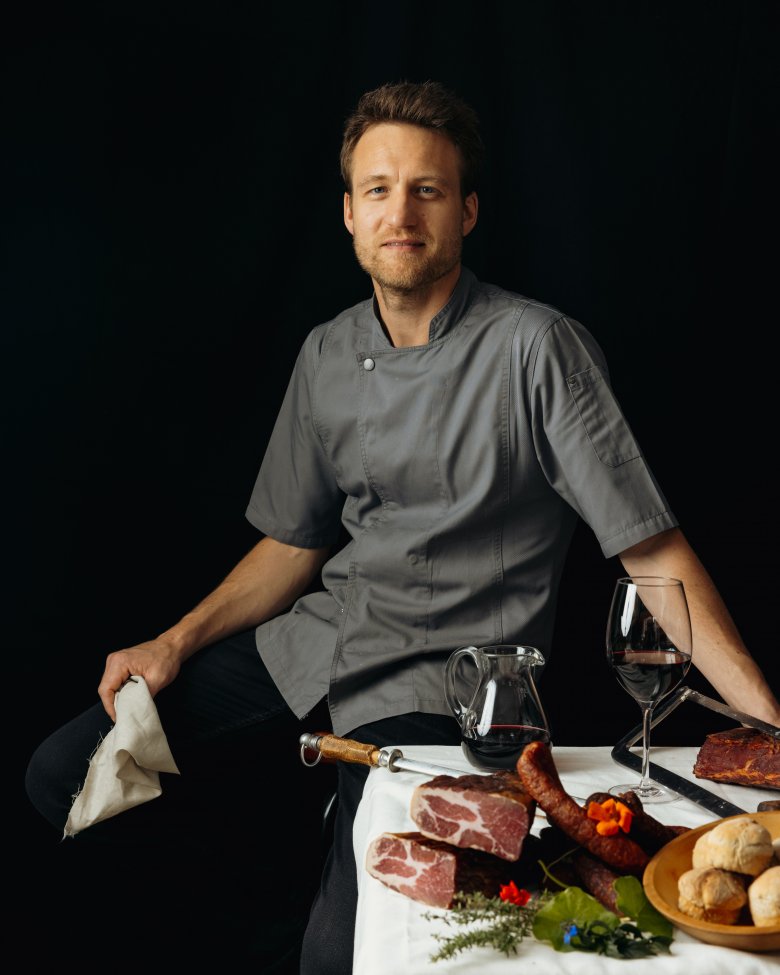
Georg Hauser grew up at the inn that is now his restaurant – the Gasthaus Nester. As a child he was fascinated above all by evenings at the inn: the hustle and bustle, the smells, the thick fog of smoke, the women's cologne. The worst moment for Georg was when he was sent to bed at eight o'clock and silence fell on his room. He would have so preferred to stay downstairs and immerse himself in the laughter, merriment and dancing, if only as a silent observer. "Even as a child I was often afraid of missing out on something."
Visits to the slaughterhouse were also part of Georg's childhood. Often he would be woken in the morning by the squealing of pigs. Then knew that he had to "hurry to find daddy". His father not only worked as chef in the kitchen but was also responsible for slaughtering the animals on the family farm. "He never forced us to be present or made us watch – it was simply something we were interested in. He would sit us down on a platform so we could safely watch what was happening," Georg remembers.
Georg decided to follow in the footsteps of his father and also train as a butcher, but as soon as he completed the course he knew that he wanted more. "I always felt like a chef. I could cook all the dishes we had on the menu. Only later did I realise that there were very different ways to do it." Georg trained as a chef at the famous Sieghard restaurant in Hippach and eventually became a gourmet chef. Over the yeaes his style began to differ from his father's. "He always wanted to keep things simple, I wanted to make things complicated," says Georg with a wry smile.
When Georg took over his the running of the Gasthaus Nester in 2012, he also kept the adjoining butcher's shop. All animals which are slaughtered by him end up either on the restaurant's menu or on sale in the butcher's shop. In the latter you will find, among other things, homemade sausages, truffle salami, deer-and-rosemary sausages and Tirolean dried bacon.
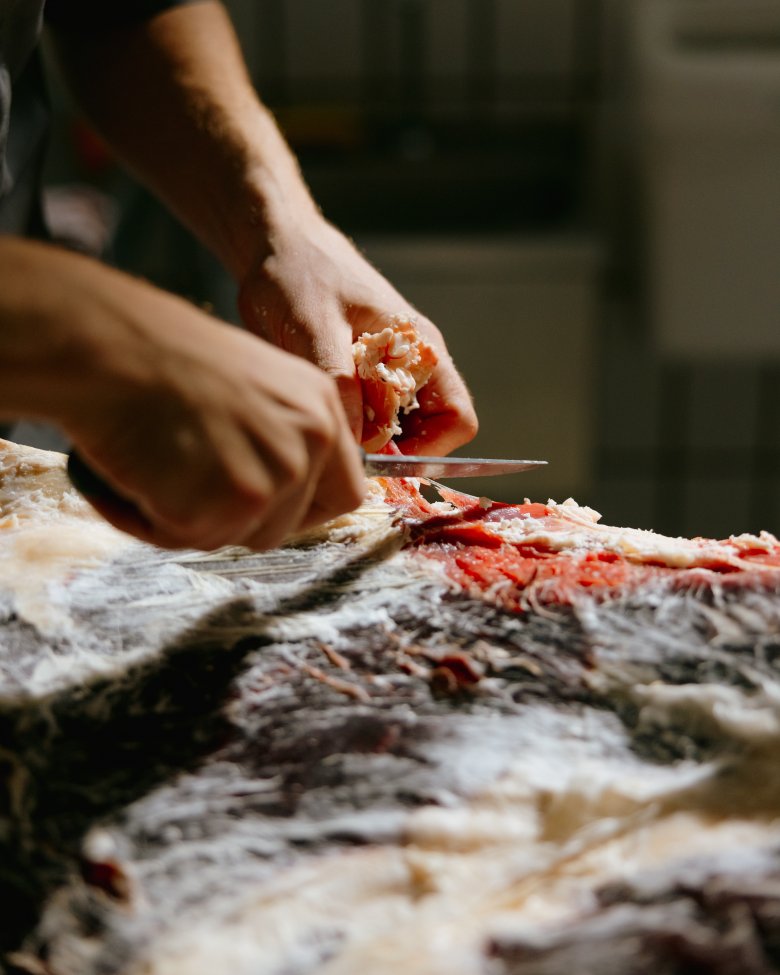
Georg personally chooses the animals to be slaughtered. He is keen to use every bit of the animal. And each is unique. Cows that have not yet calved offer a taste different from that of bulls, he explains. "The meat structure is completely different," says Georg. The animals come from the local farm and have a journey of just two to three minutes. The slaughtering process itself takes place at the Gasthaus Nester. "That way we know the animal is slaughtered well and suffers as little as possible. We have set everything up here so we can show the animals maximum respect." After slaughter, the animal is hung for a fortnight and is then butchered from the neck down.
Georg reads the meat structure of the animal like a map before he applies the knife. "There are parts of the animal where it is only once you have slaughtered it that you know what you can do with them, what dishes they are suitable for." The shoulder, for example, is normally cut of meat that is braised, he says. But with the animal Georg is working on, he notices the perfect marbling around the shoulder area and so decides to use it as flat iron. The 'secret cuts' are also used – a term which refers to the almost forgotten pieces of the animal such as the meat around the diaphragm and the ribs. In the past this meat was used to make sausage and aspic. "But a good butcher always kept it for himself and fried it, that was his secret." Today, some of these cuts such as skirt steak are popular again and often served at the Gasthaus Nester. "The beef flavour is very intense, the meat has a special bite, it's just interesting," Georg enthuses. He talks about food and cooking in unusual detail. "What does Tirol taste like? For me, Tirol is the taste of milk and cheese. When I think of Tirol I can smell mountain herbs and the melted butter we use to fry our famous Krapfen."

His mother, Monika, is in charge of salads. She and Georg are similar in character and ambition. Important to them is not just the end product but also how something is made. When it comes to her salads, Monika strives to achieve a perfect fusion of fruit, vegetables, mountain cheese, sweetness and acidity. Together, Monika and Georg have cooked their way through traditional local dishes. "It's about mixing tradition with art. We want our diners to understand what we do here. There is no big menu, everything is very regional. I always look at the ingredients we have and then I make something out of them, not the other way around," explains Monika, who actually trained and worked as a teacher for many years. In the 1980s her husband took over the Gasthaus Nester and she joined the team. "For me it was all totally new back then. Then came the tourism boom, when guests came by the busload. They had food vouchers given to them by the hotels where they were staying. I remember we had to stick these vouchers into a folder and then take the folder to the local tourist board, where we would be reimbursed for the meals we had served," says Monika with a laugh. During busy periods, she says, the family would serve over 300 meals a day.
With so much to do, it is little surprise that back then she had no time to select the sweetest cranberry from the crop. Today, however, things have changed at the Gasthaus Nester – good things come to those who wait. That means serving dishes such as 'Scheiterhaufen', a sweet dessert, only when the apricots are 100% ripe. It used to be considered a way of using up leftovers, but it is now a classic in Tirol and a popular choice on the menu in many traditional inns such as the Gasthaus Nester.
Today I am in for a treat. On the menu is a summer salad with sweetbreads from the family butcher's shop and, of course, a 'Scheiterhaufen' with fresh local apricots.
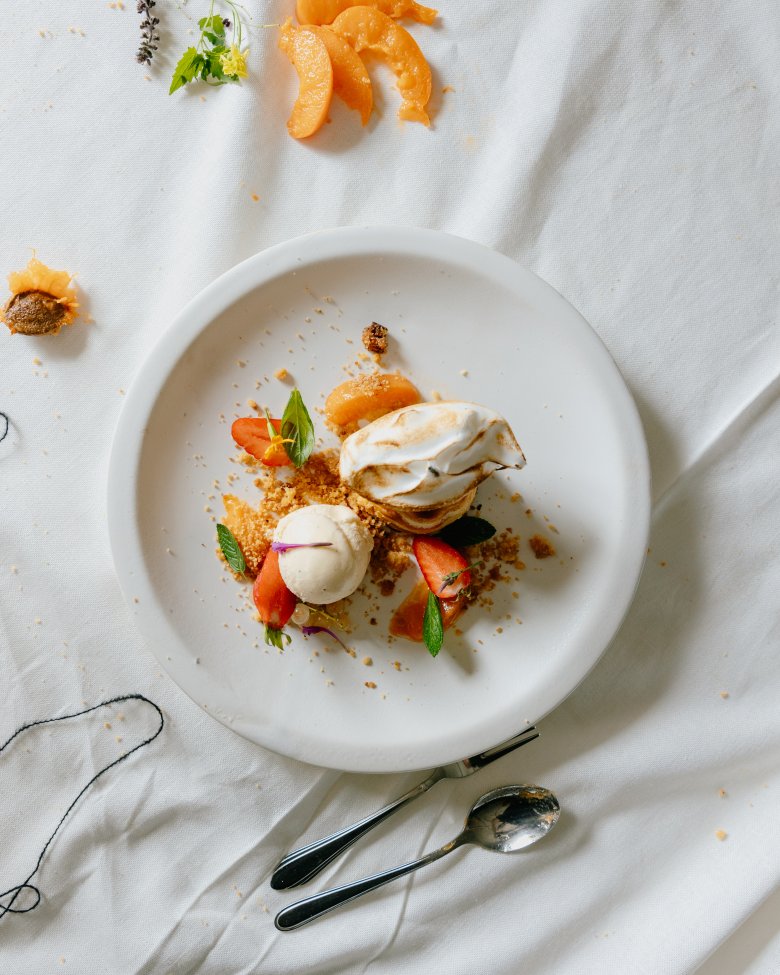

Anna's design agency Molle&Korn creates the highlight campaigns for Tirol. During her time working on these projects she has experienced her fair share of adventures, eaten more than a few dumplings and met plenty of Tiroleans who have inspired her. One of her big dreams, again inspired by a local, is to climb the migthy Großvenediger mountain in East Tirol.









